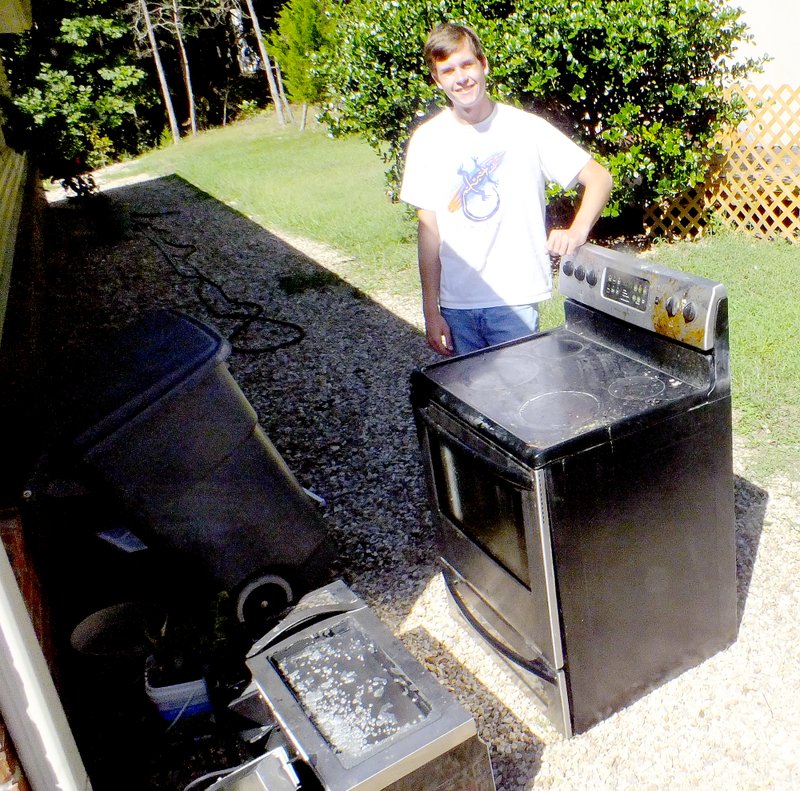Knowing how to operate a fire extinguisher meant the difference between losing a home and losing a meal for one Bella Vista resident.
Isaac Haas, 18, was cooking fish Aug. 17 when he left the kitchen to check on his younger brother David. When Isaac returned, the kitchen was filled with smoke and there were flames coming from a frying pan on the burner.
"When fire happened part of me wanted to run and call 911 and let the Fire Department handle it," Isaac said. "But my other half didn't want to lose the house."
Isaac, who had some fire safety training thanks to his parents and the Boy Scouts, quickly sprang into action. He ordered David to leave the house and call 911. Isaac then went for the fire extinguisher stored in the garage and returned to douse the flames.
Once the fire was extinguished, Isaac turned the stove off and left the house, calling his parents and then the Fire Department. The mini-blaze didn't last long, but the damage done to the stove and microwave was irreparable. The ceiling of the kitchen was blotted with smoke and some cabinets will have have to be repaired.
But Isaac's father, Paul, said he was glad his son "had the presence of mind to do what he did."
"He couldn't have done any better," Paul said. "If he hadn't acted as quickly as he did I'm not sure we would have a house right now."
Isaac's text-book reaction of what to do during a kitchen fire earned lofty praise from Fire Chief Steve Sims.
"He did exactly what he was supposed to do," Sims said. "It would be good if more kids his age knew how to use a fire extinguisher. It's important to educate young people about that."
Sims recommends keeping fire extinguishers in easy-to-access areas, but also situating them where residents can still exit the house safely.
"You don't want to have them in an area where you can't get away from the fire if you go after the extinguisher," he said. "A lot of people have them halfway between their laundry room and the kitchen -- sometimes even in the garage."
Sims urges residents to get an "ABC fire extinguisher."
"The A, B and C are levels of classifications," he said. "An ABC takes care of three types of fire: trash, textiles and wood (A), liquids (B) and electrical (C)."
Going through a mock operation of a fire each month also can be beneficial, Sims said.
"I encourage people to take the extinguisher and remove it from the wall and read through the instructions, making sure they know how to operate it in case of an emergency. Learn and get comfortable with the PASS technique: pull the pin, aim, squeeze and sweep at the base of the fire."
Picking up the canister and turning it upside down a few times also will help loosen the powder inside. Checking the hose for obstructions also is important, Sims added.
If the gauge on the canister shows the needle "in the green," the extinguisher should contain suitable pressure and powder in case of an emergency, Sims said.
Sims recommends replacing fire extinguishers after each use and once every six years, which aligns with Occupational Safety & Health Administration standards for commercial extinguishers.
General News on 08/26/2015
